Commvault HyperScale™ X Validated Reference Designs with Supermicro SuperServers and SuperStorage deliver intuitive and easy-to-deploy integrated scale-out data protection solutions.
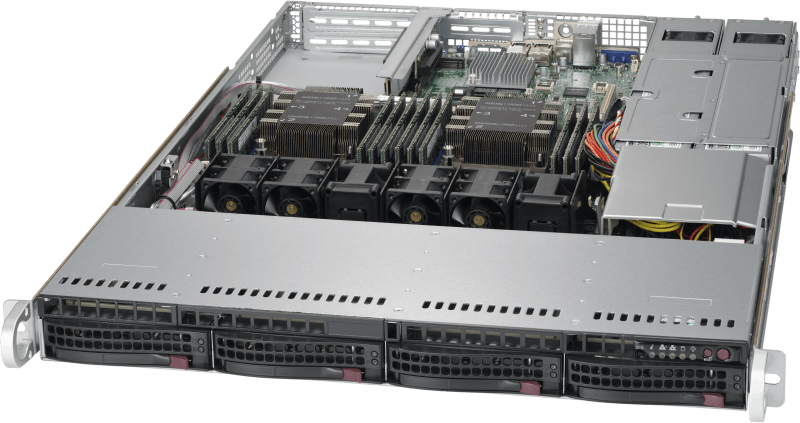
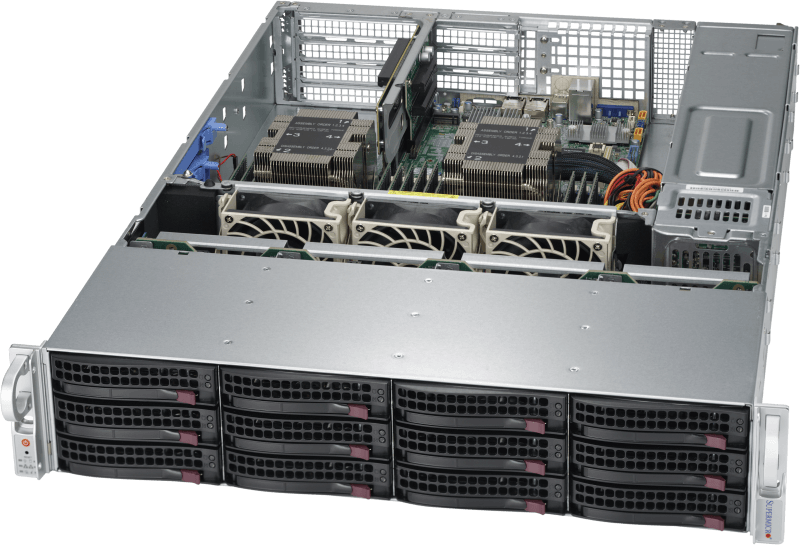
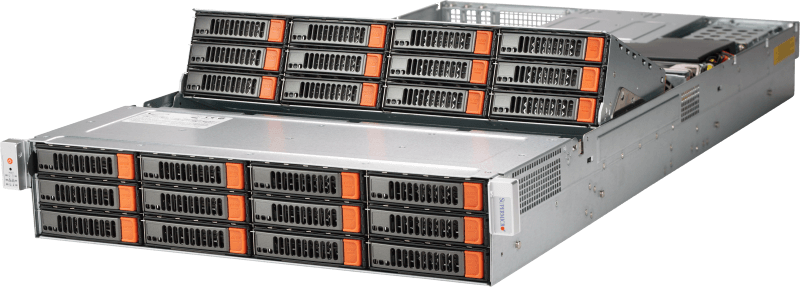
Take the guesswork out of configuring the system and reduce complexity, cost, and risk vs. traditional ‘build-your-own’ data management solutions. Accelerate your time to the first backup with pre-defined configurations that include SKUs to simplify ordering.
Commvault and Supermicro help you accelerate hybrid cloud adoption and deliver:
- Simple, flexible data protection for all workloads including containers, virtual, and databases
- High performance backup and recovery with enhanced recovery capabilities
- Optimized scalability to easily grow as needed, on-prem and to the cloud
- Enhanced resiliency with intelligent load balancing of data across disks and nodes and the ability to support multiple hardware failures
- Built-in ransomware protection via intelligent monitoring to detect data anomalies and alert users
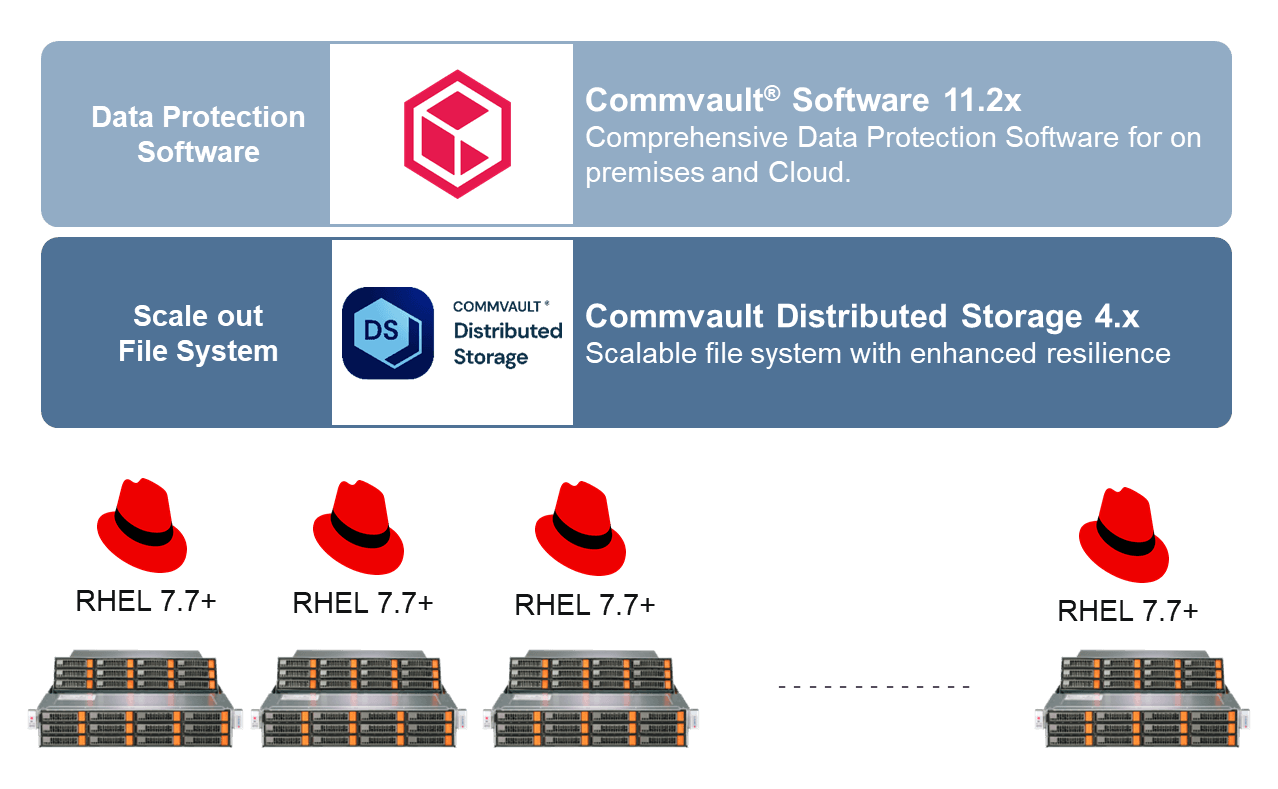
Select the model that Best Fits for Your Application/Environment and capacity requirement
- Systems come fully populated with HDDs
- Multiple options available for Networking
Scale Out Architecture
Each node adds:
- CPU cores
- Storage Capacity
- Network Bandwidth
- Resiliency & Fault Tolerance
Start with 3 Nodes: Add individual nodes to scale to PBs of data in one storage pool
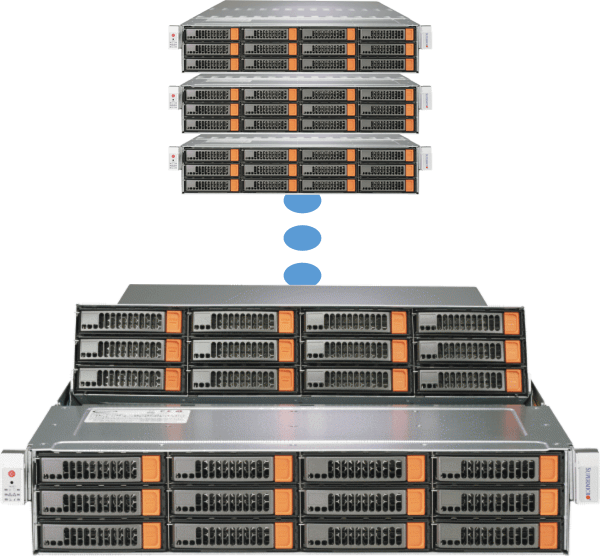
Unified platform for storage capacity and performance
- Helps lower TCO by making it easier to service the entire cluster or expand the whole infrastructure
Global service program
- Ensures system resource availability and maximizes data security
Field-proven hardware
- Global Supermicro Server models offering economy of scale as well as long/sustainable deployment lifecycle
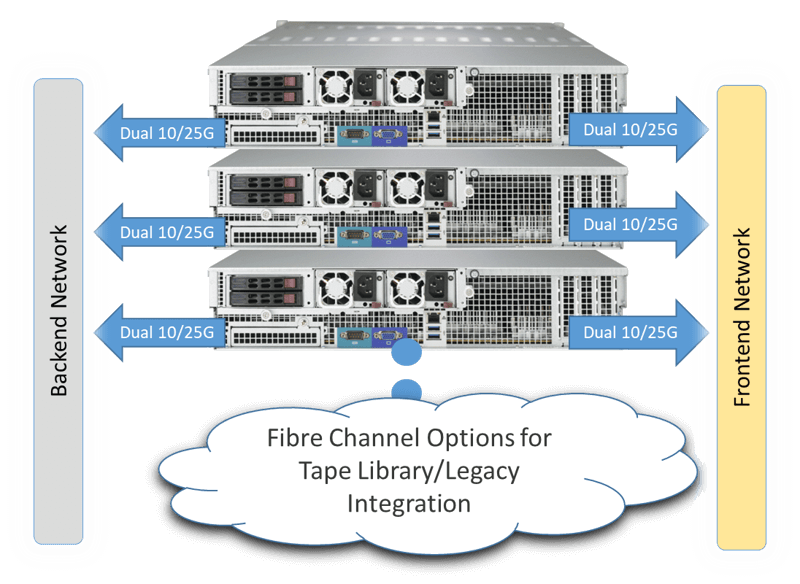
Networking Options
A minimum of two (2x) 10GB ports are required per node for Commvault HyperScale X installs, one for protected data and one for storage communication between the nodes. It is recommended to have a total of four (4x) ports per node, preferably on two separate cards, two (2x) for data and two (2x) for storage for resilience against network failures. These builds have been designed with this recommendation.
Optional I/O add-on cards
The design includes all core components to support Commvault HyperScale™ X Technology. Flexibilities to accommodate a specific customer use-case comes in the form of number of available PCIe slots in the selected server and is limited to the available options in the “I/O & Add-on Cards” section below. For example, optional I/O cards for SAS, Ethernet or Fiber Channel connectivity require a free PCIe slot in the server being considered. SAS Connectivity is typically used for direct tape integration, while Fiber Channel (FC) cards are used for Commvault IntelliSnap® technology operations or tape libraries. Additional Ethernet cards may be required for dedicated replication network or to connect to Clients in isolated networks.
This section applies to N4 ONLY:
I/O & Add-on Cards: There are three (3x) available PCIe slots in each server node. These PCIe slots need to be populated optimally to provide a minimum of 4x 10/25G Ethernet ports per server and any other connectivity such as Fiber-Channel (FC) for Intellinap/tapeout or additional Ethernet for a dedicated replication network. It is therefore important to use the correct (dual or quad-port) Ethernet NIC. Network bonding and zoning best-practices recommend the use of ports from separate cards for better resilience. Following are the supported components for this server.
| Supermicro SKU | Description |
|---|---|
| AOC-QLE2742SR | PCIe x8 3.0, Qlogic QLE2742-SR dual-port Gen6 32G FC HBA |
| AOC-QLE2672 | Logic QLE2672 16 GB Dual Port FC HBA PCIE GEN5 |
| AOC-STG-I4S | 4-port 10GbE Standard LP with SFP+ |
| AOC-STG-I4T | 4-port 10GBase-T controller based on Intel® XL710 and X557 chipsets |
This section applies to N12 ONLY:
I/O & Add-on Cards: There are three (3x) available PCIe slots in each server node. These PCIe slots need to be populated optimally to provide a minimum of 4x 10/25G ethernet ports per server and any other connectivity such as Fiber-Channel (FC) for Intellisnap/tapeout or additional ethernet for a dedicated replication network. It is therefore important to use the correct (dual or quad-port) ethernet NIC. Network bonding and zoning best-practices recommend the use of ports from separate cards for better resilience. Following are the supported components for this server.
| Supermicro SKU | Description |
|---|---|
| AOC-QLE2742SR | PCIe x8 3.0, Qlogic QLE2742-SR dual-port Gen6 32G FC HBA |
| AOC-S25G-i2S-O | PCIe Standard Low Profile 25G dual-port SFP28, based on Intel XXV710 |
| AOC-STG-I4S | 4-port 10GbE Standard LP with SFP+ |
This section applies to N24 ONLY:
I/O & Add-on Cards: There is one SIOM and two (2x) available PCIe slots in each server. The SIOM slot needs to be populated with the appropriate Ethernet card to provide a minimum of 4x 10/25G Ethernet ports per server and any other connectivity such as Fiber-Channel (FC) for Intellisnap/tapeout or additional ethernet for a dedicated replication network. Thus, if the customer requires six (6x) Ethernet ports, the SIOM slot needs to be populated with the appropriate quad-port NIC. This will allow for one of the two PCIe slots to be used with a dual-port ethernet NIC. The last available PCIe slot can then be used for FC connectivity, if required. Network bonding and zoning best-practices recommend the use of ports from separate cards for better resilience.
| Supermicro SKU | Description |
|---|---|
| AOC-M25G-I2S-O | SIOM Dual-port 10/25GbE with 2 SFP28 ports based on Intel Fortville-25 XXV710.,RoHS |
| AOC-M25G-M4S-O | SIOM Quad-port 25GbE SFP28 based on Mellanox ConnectX-4 Lx E |
| AOC-MTG-I4S-O | SIOM Quad-port 10GbE controller with 4x SFP+ ports, based on Intel Fortville XL710., RoHS/REACH |
| AOC-QLE2742SR | PCIe x8 3.0, Qlogic QLE2742-SR dual-port Gen6 32G FC HBA |
| AOC-S25G-i2S-O | PCIe Standard Low Profile 25G dual-port SFP28, based on Intel XXV710 |